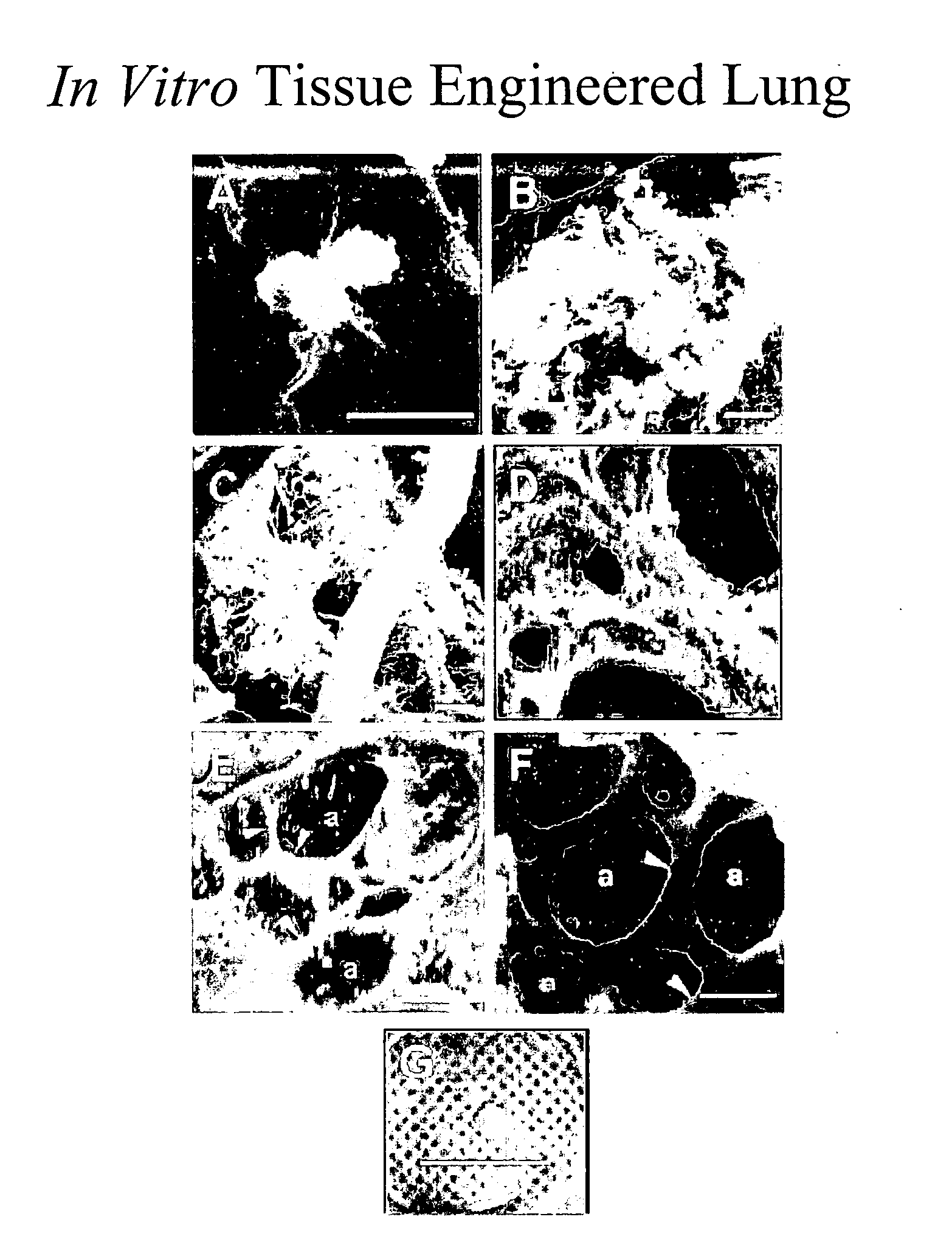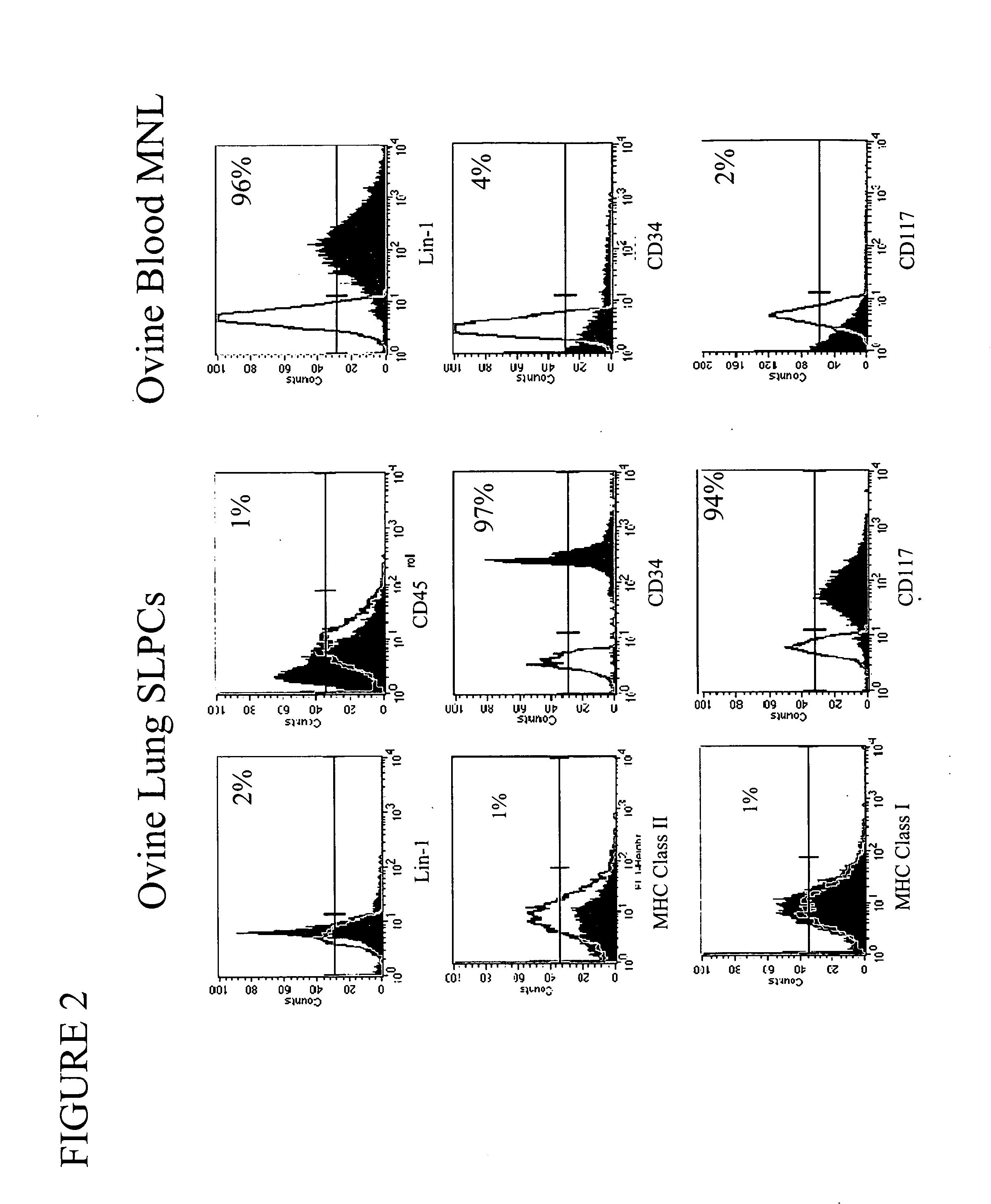Engineered lung tissue, hydrogel/somatic lung progenitor cell constructs to support tissue growth, and method for making and using same
a technology of lung tissue and progenitor cells, which is applied in the field of engineered lung tissue, hydrogel/somatic lung progenitor cell constructs to support tissue growth, and the method of making and using same, can solve the problems of limited application, limited actual engineering of all of the component parts of lung tissue, and limited lung tissue engineering progress, so as to restore some or all of the functionality of the non-functioning area, aide stem cell differentiation and tissue growth, and restore some or all of the functional area
- Summary
- Abstract
- Description
- Claims
- Application Information
AI Technical Summary
Benefits of technology
Problems solved by technology
Method used
Image
Examples
Embodiment Construction
[0030]The inventors have found that synthetic polymers progenitor cell / polymer constructs such as polyglycolic acid (PGA) and Pluronic F-127 (PF-127) progenitor cell / polymer constructs can be produced to support lung tissue development in both in vitro and in vivo human model system. The inventors have demonstrated that these precursor cells can differentiate into numerous cell types that produce Clara cell protein 10 (CC10), cytokeratin, and surfactant protein C (SP-C) prior to formation of cell / polymer constructs. The inventors have also shown that the use of synthetic polymers such as PGA and PF127 not only facilitated tissue formation, but aids in proper tissue assembly.
[0031]Although the in vitro studies using PGA to engineer lung tissue were promising, PGA was not the polymer of choice for developing lung tissue in vivo as it created a foreign body response that effected tissue growth. The inventors have isolated and characterized a population of adult-derived or somatic lung ...
PUM
 Login to View More
Login to View More Abstract
Description
Claims
Application Information
 Login to View More
Login to View More - R&D
- Intellectual Property
- Life Sciences
- Materials
- Tech Scout
- Unparalleled Data Quality
- Higher Quality Content
- 60% Fewer Hallucinations
Browse by: Latest US Patents, China's latest patents, Technical Efficacy Thesaurus, Application Domain, Technology Topic, Popular Technical Reports.
© 2025 PatSnap. All rights reserved.Legal|Privacy policy|Modern Slavery Act Transparency Statement|Sitemap|About US| Contact US: help@patsnap.com



